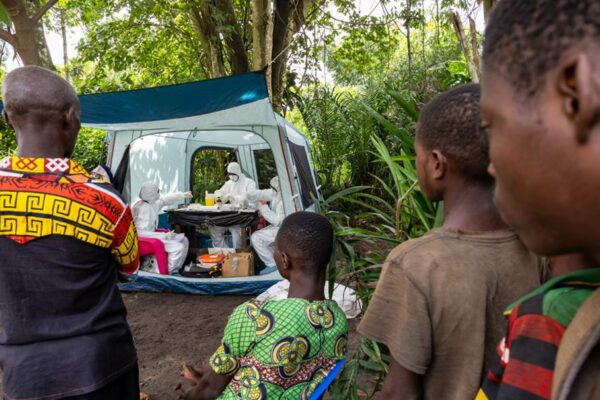A Sciences et Avenir photo essay on the trail of mpox supported by AFROSCREEN
A Sciences et Avenir photo essay on the trail of mpox supported by AFROSCREEN

©Jean-François Lagrot
In the Democratic Republic of Congo (DRC), where mpox is endemic, a Franco-Congolese mission is conducting research to identify the virus’ reservoir animal, while observing the evolution of the disease in the country’s least accessible areas. AFROSCREEN has supported a photo essay on this crucial fieldwork to anticipate any outbreaks.
Freelance photojournalist Jean-François Lagrot accompanied a joint mission of researchers from Kinshasa’s Institut National de la Recherche Biomédicale (INRB) and the Institut de Recherche pour le Développement (IRD), along with agents from the Provincial Health Division, on the trail of mpox in the heart of rural and forest health zones in Equateur Province.

Observing clinical signs and questioning people to retrace the history of contamination, the mission’s scientists quickly leaned towards the zoonosis hypothesis. The animal reservoir of the disease? Undoubtedly a rodent…
In the east of the country, the situation is different, with the disease circulating mainly via human-to-human transmission. These differences are partly explained by the different strains of the Mpox clades discovered thanks to genomic sequencing. Clade 1, found in Central Africa and therefore in the DRC, has two strains: 1a, with high genetic variability, which has been circulating in animals for centuries, and 1b, with low genetic variability, which has recently appeared in humans. AFROSCREEN supports numerous studies on Mpox
Operational public health research carried out by teams from INRB’s virology and genomics laboratories, headed by Professors Steve Ahuka Mundeke and Placide Mbala, in collaboration with IRD TRANSVIHMI, is generating vital scientific knowledge in the fight against these viruses.
You can read Jean-François Lagrot’s photo essay and full article here.
©Jean-François Lagrot
In the Democratic Republic of Congo (DRC), where mpox is endemic, a Franco-Congolese mission is conducting research to identify the virus’ reservoir animal, while observing the evolution of the disease in the country’s least accessible areas. AFROSCREEN has supported a photo essay on this crucial fieldwork to anticipate any outbreaks.
Freelance photojournalist Jean-François Lagrot accompanied a joint mission of researchers from Kinshasa’s Institut National de la Recherche Biomédicale (INRB) and the Institut de Recherche pour le Développement (IRD), along with agents from the Provincial Health Division, on the trail of mpox in the heart of rural and forest health zones in Equateur Province.

Observing clinical signs and questioning people to retrace the history of contamination, the mission’s scientists quickly leaned towards the zoonosis hypothesis. The animal reservoir of the disease? Undoubtedly a rodent…
In the east of the country, the situation is different, with the disease circulating mainly via human-to-human transmission. These differences are partly explained by the different strains of the Mpox clades discovered thanks to genomic sequencing. Clade 1, found in Central Africa and therefore in the DRC, has two strains: 1a, with high genetic variability, which has been circulating in animals for centuries, and 1b, with low genetic variability, which has recently appeared in humans. AFROSCREEN supports numerous studies on Mpox
Operational public health research carried out by teams from INRB’s virology and genomics laboratories, headed by Professors Steve Ahuka Mundeke and Placide Mbala, in collaboration with IRD TRANSVIHMI, is generating vital scientific knowledge in the fight against these viruses.
You can read Jean-François Lagrot’s photo essay and full article here.